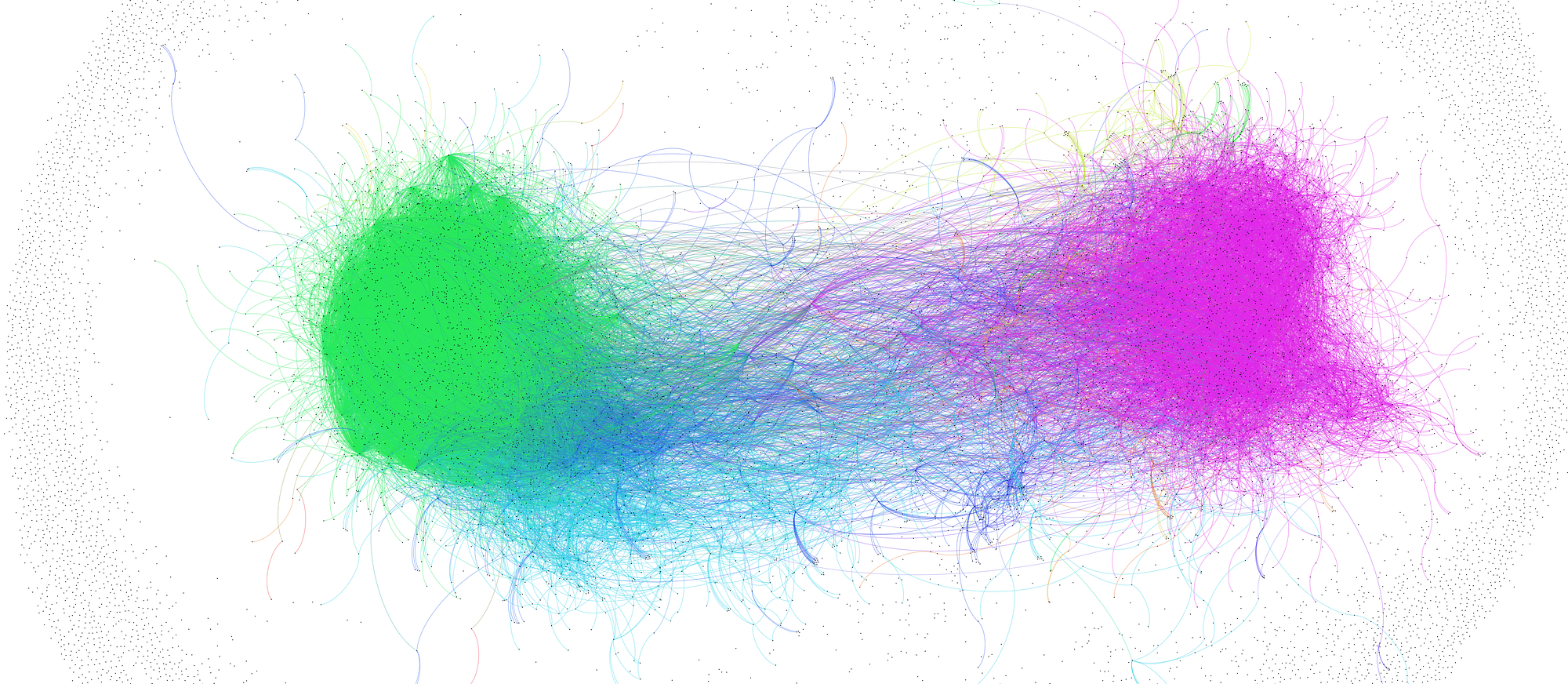“All that is necessary for the triumph of evil is that good men do nothing.” (variously attributed – Google it)
In his graduation speech, Neil Postman characterised two groups from history, the Athenians and the Visigoths, each of which has since disappeared but has left their mark on subsequent cultures. For Postman, they were ideas, around which we could express values: Athenians exalted knowledge and the quest for it; while Visigoths placed themselves at the centre of the universe with no sense of community. We can see that the Athenians are the ‘goodies’ and the Visigoths are the ‘baddies’. http://www.firstthings.com/blogs/firstthoughts/2009/06/athenians-and-visigoths-neil-postmans-graduation-speech/
We could observe that Athenians and Visigoths are evident in our face to face and online worlds, as Postman suggested, but this dichotomy obscures a more complex reality. On a forum in the late 1990s, I shared the thought that the world could be divided into two types of people, those who thought that the world could be divided into two types of people and those who didn’t. I have since discovered that this isn’t an original observation but that’s no obstacle to applying the concept http://quoteinvestigator.com/2014/02/07/two-classes/.
When the Athenians/ Visigoths goodies/baddies is used as a dualism to categorise people, we can lose the opportunity to explore ideas and behaviours that might be changed (in ourselves and in others). If we were trying to understand Gamergate, then we could characterise Anita Sarkeesian as an Athenian exploring the tropes of women within games, and the anonymous people issuing death threats as Visigoths. Already, this could be a problem because people who had some (possibly valid) critique of Sarkeesian’s work might be polarised by my valorisation of her as an Athenian. Those who persist in seeing Gamergate as about ethical practice in gaming journalism would feel misrepresented. What interests me is what lies between the two extremes: We could use Athenians and Visigoths as a duality to explore the behaviours of people who are not at one extreme or another but that is personalising the issues rather looking at the behaviours. It seems to me to be pretty clear cut that people online issuing death threats should be investigated and prosecuted, and I would not waste my time trying to reason with them. It’s much less clear how to respond to behaviours such as deliberate false claims, accidental misunderstanding (I do this frequently) and misreporting that I see daily on traditional and social media.
Debates can quickly become polarised especially on short-form media like Twitter. Andy Baion analysed tweets from a 72 hour period to visualise acitivity on #gamergate on Twitter.

He concluded that “Roughly 90–95% take a clear side either in favor or against Gamergate.” https://medium.com/message/72-hours-of-gamergate-e00513f7cf5d
Although #gamergate was not the only site of discussion about the issue, my observation from my search and from my slice of the Internet (inevitably skewed) confirmed that dialogue as Buber meant it was rare
“where each of the participants really has in mind the other or others in their present and particular being and turns to them with the intention of establishing a living mutual relation between himself and them”.
Curious about who was aware of gamergate and more general hating against women online, on 15 October, I polled some of my more connected Facebook contacts:
“Dear FB contacts with an interest in things technical/ gaming, I am interested in what might have appeared in your socmed stream in the last 10 days – Ada Lovelace Day, Brianna Wu death threats, Kathy Sierra leaving Twitter, Anita Sarkeesian threatened with gun massacre at Utah State University? http://m.bbc.co.uk/news/technology-29616197 “
The response was interesting – there was very little awareness of most of these, with a few exceptions. I think the responses might be a bit different now that some of these issues have hit mainstream media but it does seem that neither social nor traditional media can be relied on to surface important stories quickly. Two contacts held a respectful and insightful exchange about #gamergate that certainly added to my understanding. Another commented later
“the reason why I as a bystander don’t tend to get involved in the debate is mainly because of the polarising language of those who challenge the harassment. It’s commonly that any white, CIS-gendered, middle-aged (gamer) male tends to get lumped in with the dickheads. I mean fine, if people want to do that, but then that means I’m not going to engage with either camp.” (he does not want to be named as he doesn’t want to be drawn into the debate)
So fierce exchanges can be taking place in separate echo chambers; or we may be unaware of issues because of the limitations of our networks and of traditional media; or we may be unwilling to engage with topics for various reasons. Noelle-Neumann came up with the theory of the spiral of silence to explain the growth and spread of public opinion, and characterises the media as muting the minority in the spiral http://www.afirstlook.com/docs/spiral.pdf. A recent Pew Internet report on research into discussion of Edward Snowden’s 2013 revelations of widespread government surveillance of Americans’ phone and email records confirms the Spiral of Silence, with people being less likely to discuss the issue on social media than they were in person http://www.pewinternet.org/2014/08/26/social-media-and-the-spiral-of-silence/
Kate Bowles speaks of the difficulties of practicing generosity under pressure to take sides “Where we end up with this demand to take a stand, I think, is that our interactions with others become a constant, and exhausting, requirement to show ourselves as good before we speak. Even one of the most beautiful and courageous political interventions that I’ve seen all year couches itself in this way: which side are you on, friend, which side are you on? But if we accept this practice of camp loyalty as the minimum standard for being worth listening to, and no other, I think we’re also running some risks as these standards have to be expressed in terms of the grossest possible generalisation to work at all. And this means that we are already prepared to relinquish what is particular and complicated about any interaction between two people.” http://musicfordeckchairs.wordpress.com/2014/10/22/not-done-yet/
I think that polarisation might to contribute to ‘bystander’ behaviour of those whose views lie between the poles in a given debate. In a previous post, I pondered some strategies for
- We can look at how we can understand and appreciate the experiences of others by really listening
- We can take a break like Kathy Sierra and Julie Pagano have done
- We can challenge hostile and malignant cultures by
- mocking them like #ghcmanwatch did
- or when a grave injustice has occurred by campaigns like #justiceforLB
Increasing the diversity of our networks and the quality of the media that shape our opinions might help but we need collective approaches too I think. But this presents its own challenges. The communities to which we are drawn can be in tension with the need for diversity as they will tend to promote conformity unless we are vigilant. I think we need to resist thinking of others as Visigoths and ourselves as Athenians, and acknowledge more complex combinations of Visigoth and Athenian behaviours.


